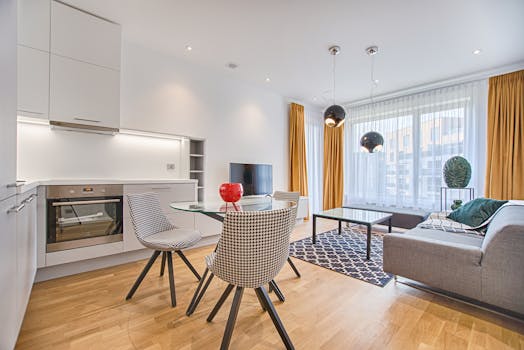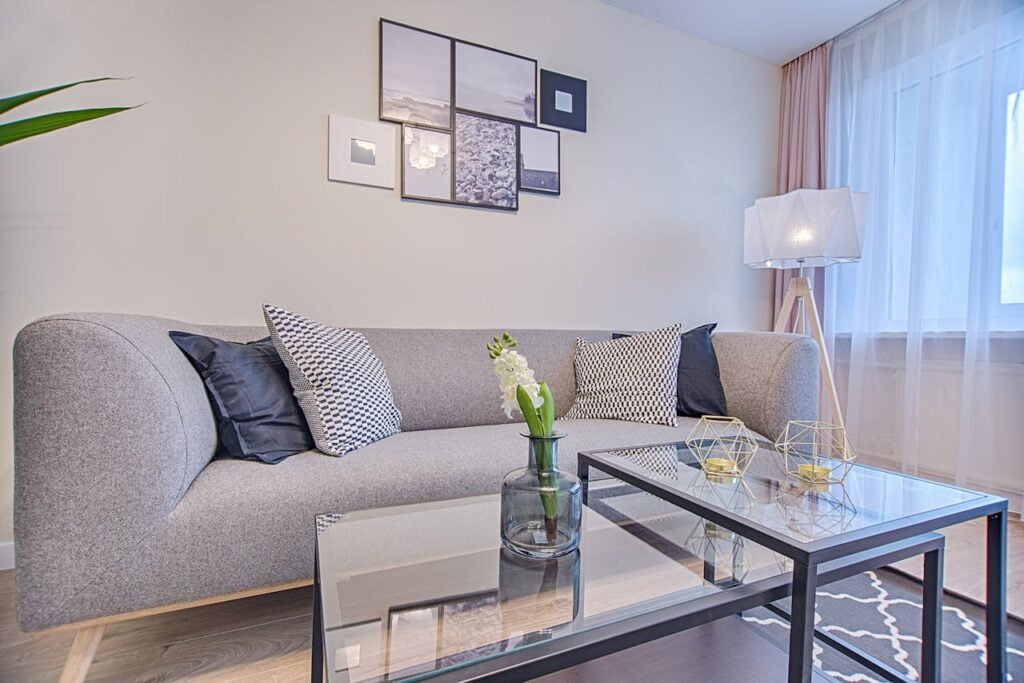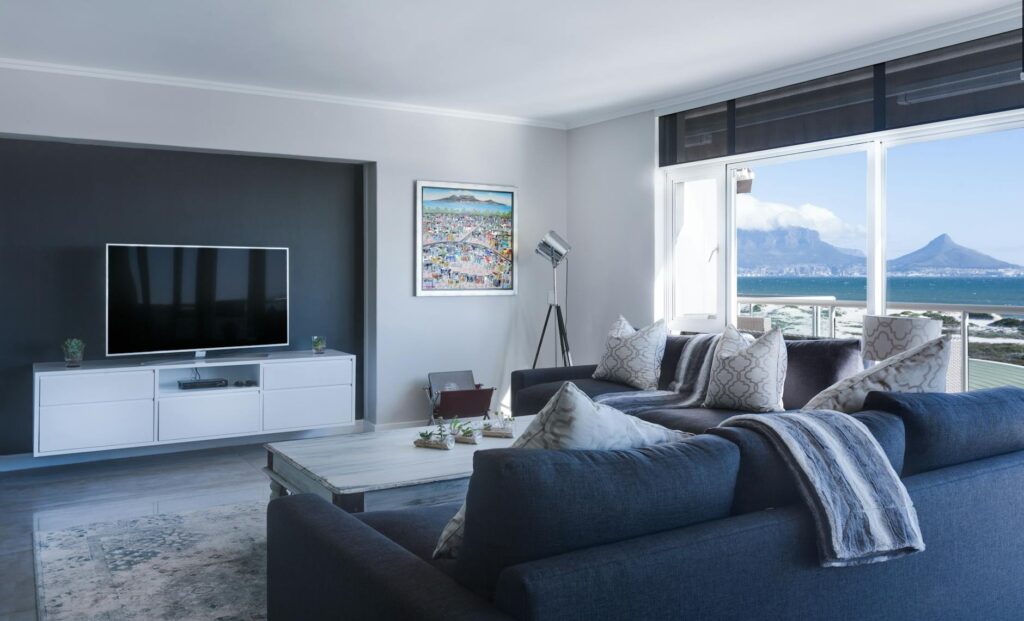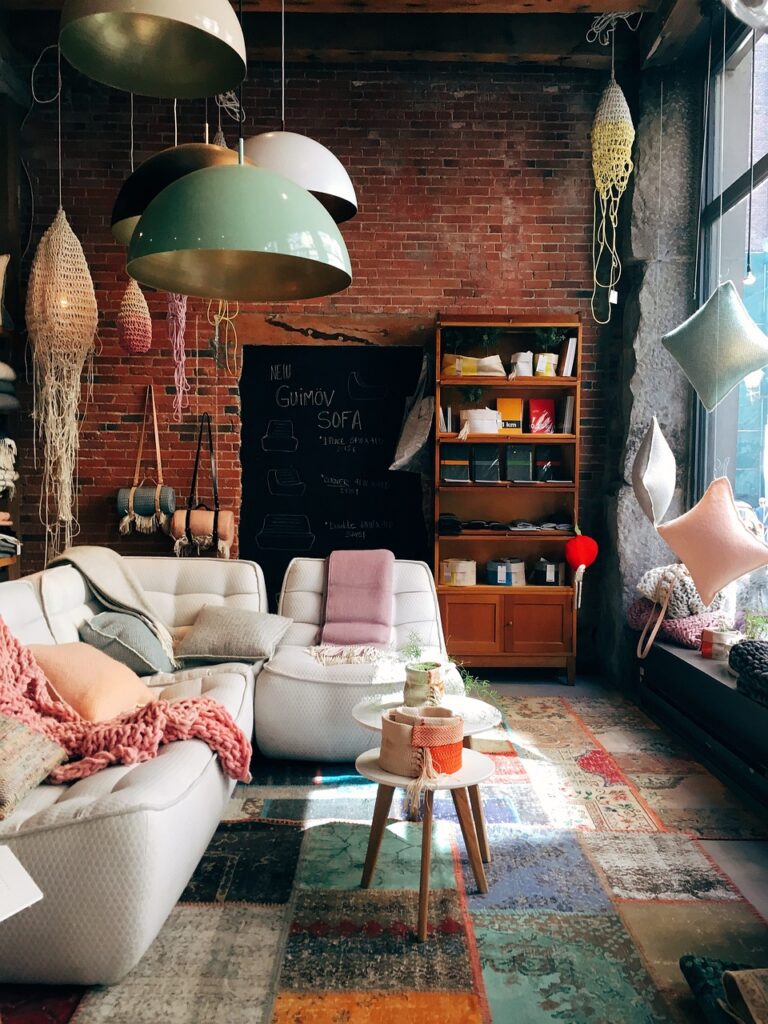Your living room is more than just a space; it’s a blank canvas waiting for your personal touch. You may be starting from scratch. Alternatively, you might be giving your current setup a face lift. In either case, we’re here to help you create a living room that truly reflects your style, comfort, and personality.

Personal Living Room Design Inspiration and Tips
1. Start with a Vision
Before you start moving furniture or picking out paint colors, take a moment to picture how you want your living room to feel. Do you want it cozy and intimate? Bright and airy? A mix of both? Pull inspiration from nature’s biophilic decor, travel, or your favorite memories. Let this vision guide your choices.
2. Budget Wisely
Decorating doesn’t have to cost a fortune. Set a budget and spend wisely. Splurge on timeless pieces like a quality sofa or a standout rug. Save on accents that you can easily swap out over time.
3. Personalize with Purpose
Your living room should tell your story. Include family photos, heirlooms, or souvenirs from your travels. These personal touches make the space uniquely yours. Think about framing sentimental artwork or displaying cherished books.

4. Focus on the Sofa
The sofa is the heart of your living room. Pick one that’s comfortable and well-designed. Choose a color that fits your overall palette and don’t forget about fabric—go for something durable that doesn’t skimp on style.
5. Play with Texture
Texture adds depth and warmth to a room. Mix and match different materials: soft pillows, a sleek coffee table, a rustic wooden sideboard. From plush to hard, and everything in between, texture makes a big difference. Pillows, especially, are an affordable way to play with texture.
6. Embrace Wood Elements
Wood brings a natural warmth to any space. Think about adding wooden wall paneling, side tables, or even a carved wooden art piece. It’s timeless and versatile.

7. Balance Light and Dark
Balance is key. If your living room is mostly white, add some dark accents. If it’s on the darker side, introduce lighter elements. This contrast creates visual interest.
8. Spice Up Neutrals
Neutral doesn’t have to mean boring. Combine different neutral shades—white, beige, caramel—to add richness. Play with finishes too, like matte, glossy, or textured.
9. Mix Upholstery Fabrics
Matching sets are safe, but mixing upholstery fabrics adds character. Try pairing a leather sofa with fabric armchairs. It’s unexpected and visually appealing.

10. Curate Thoughtfully
Less is more. Be intentional with your decor. Each piece should have a purpose and contribute to the overall harmony of the room. Avoid clutter and let your living room breathe.
Decorating is an ongoing journey. Be open to rearranging, experimenting, and evolving. Your living room should reflect your joy, memories, and the stories you’ll create within its walls.
faq
1. How Do I Start Decorating My Living Room?
Starting your living room decor journey involves a few key steps:
- Set Parameters: Begin by defining your budget and color scheme. These parameters will guide your choices.
- Choose Large Pieces: Select one or two substantial furniture items that fit the scale of your space. These will serve as the foundation for your room.
- Family-Friendly Decor: Keep your family’s needs and preferences in mind. Create a space where everyone feels comfortable.
- Layer Smaller Decor: Add depth and personality by layering smaller elements like lamps, decorative objects, rugs, and indoor plants.
Remember, your living room is an expression of your lifestyle and taste. Let it evolve over time as you discover what works best for you.
2. What Is the 60/30/10 Decorating Rule?
The 60/30/10 rule is a popular strategy for achieving a harmonious color scheme in your room:
- 60% Dominant Color: Use the dominant color for approximately 60% of the room. This be on walls, large furniture, or major decor elements.
- 30% Secondary Color: Introduce a secondary color that complements the dominant one. This can be through upholstery, accent walls, or smaller decor pieces.
- 10% Accent Shade: Reserve the final 10% for an accent color. Think of throw pillows, artwork, or decorative accessories.
By following this rule, you’ll create a balanced and visually appealing living room.
3. How Do You Decorate a Living Room on a Budget?
Decorating on a budget doesn’t mean compromising style. Here are some savvy tips:
- Thrifting Adventure: Explore local antique shops, thrift stores, estate sales, and flea markets. You’ll find unique pieces at affordable prices.
- Repurpose and Refinish: Look for gently used items that you can install right away. Consider refinishing or reupholstering to breathe new life into them.
- Enjoy the Hunt: Embrace the process—the hunt for budget-friendly treasures can be surprisingly fun!
Remember, your living room reflects your personality, so enjoy the journey of creating a space that feels like home
